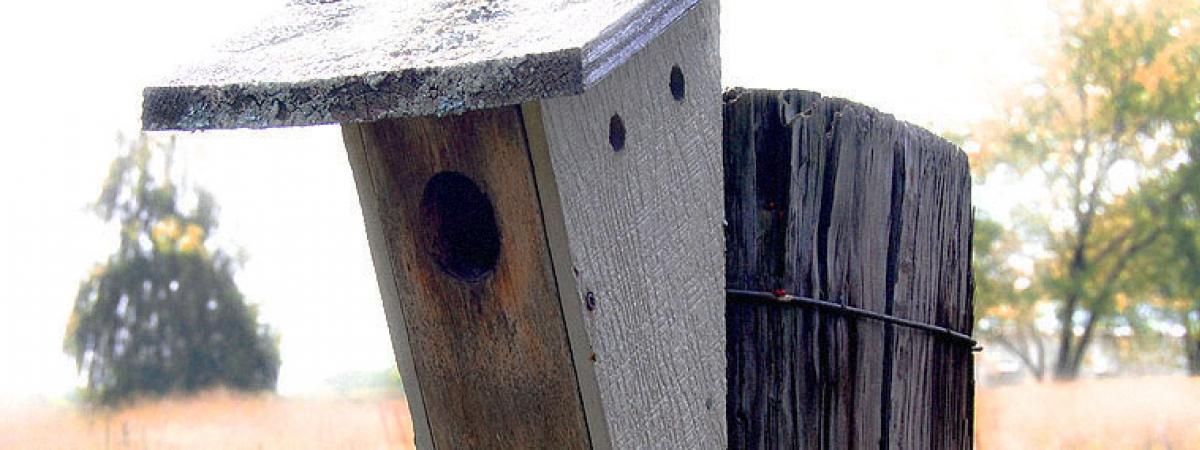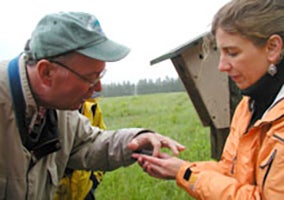The Bluebird Trail project at the farm was created in collaboration with the Cleveland Museum of Natural History. It includes 58 Peterson houses located around the research ponds and nearby fields.
Download the Bluebird trail map to enhance your visit!
The trail enriches educational programming at the farm, providing conservation and restoration opportunities. Alumni Bill Jirousek and Bruce Resnick and university staff Betsy Banks, farm volunteers, check the houses regularly during the breeding season (April to August). They recorded data and banded hatchlings. Many of the farm bluebirds wintered over, and the first bluebird egg is usually laid on the third week of April. From 2002 to 2024 over 1,500 birds have fledged the birdhouses. This included Eastern bluebirds, tree swallows and house wrens. The last bluebird usually fledged during the first week of August. In 2024, a total of 159 birds fledged , 88 Bluebirds, 56 Tree Swallows and 28 House Wrens. All use Peterson nest boxes. The total number of Bluebirds fledged over twenty-three seasons is now 1,521. In July, a male Bluebird, banded at the Farm in 2023, was re-captured.
The farm is an ideal place to create this trail due to the surrounding landscape, according to Dr. Tim Matson, researcher from the Cleveland Museum of Natural History and instructor for the Summer in the Country Birds and Breakfast course. The selected area around the research ponds and along the cross-country trail offer two basic requirements for the successful breeding and living area. The first requirement is the need for low grass. The second requirement is the water resource, which the research ponds provide.
Trail data—recorded and analyzed at the farm as part of a long-term study—continues to be included in the national database totals of Holden Arboretum and Cornell University.





